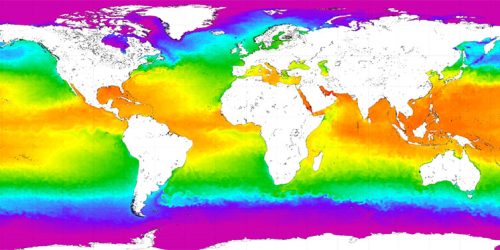Earth system models (ESMs) are useful tools for predicting and understanding past and future aspects of the climate system. However, the biological and physical parameters used in ESMs can have wide variations in their estimates. Recent studies have demonstrated that Neural Network Ensembles (NNEs) are capable of extracting relationships between predictor and target variables within ocean biogeochemical models. Building on these results, researchers from Johns Hopkins University, funded in part by CPO’s Climate Variability & Predictability (CVP) program, investigated whether NNEs could be applied to determine why different ESMs produce different spatiotemporal distributions of phytoplankton biomass.
Published in Geoscientific Model Development, results of the study indicate that NNEs were able to attribute differences between the model runs to physics and biological factors, depending on which ones were emphasized. Furthermore, NNEs could be used to compare apparent relationships between different ESMs and find their key differences. The researchers argue that, although applied specifically to the ocean components of an ESM, their study demonstrates that Earth system modelers can use NNEs to separate the contributions of different components of ESMs.
For more information, contact Jose Algarin.










